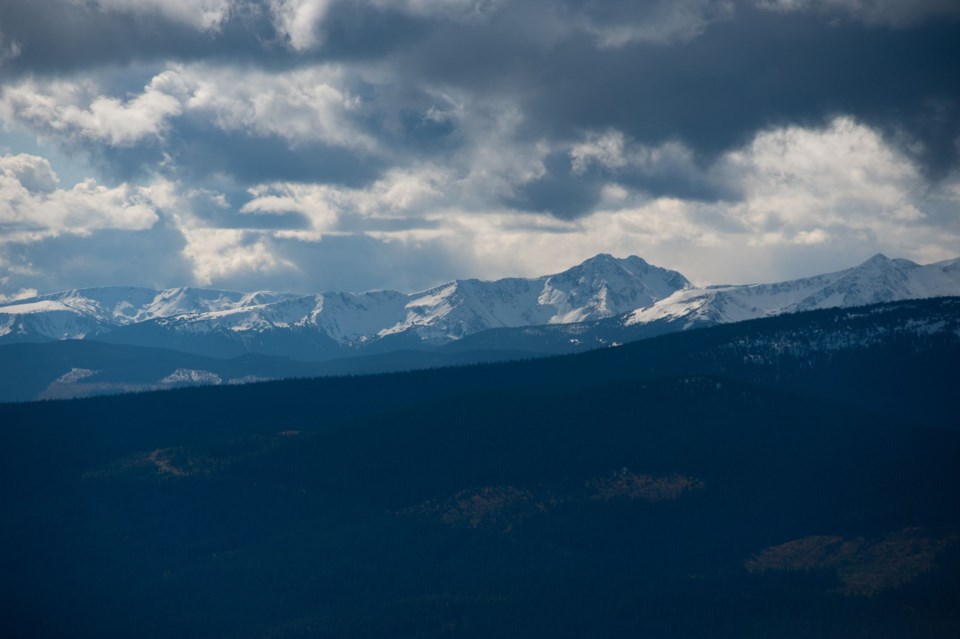A few years ago, while snowshoeing alone in the foothills of the Babine Mountains, a short drive from where I live in Smithers, B.C., I stopped in a little glade to rest. The sky was a brilliant azure blue and tiny ice crystals in the air were making everything sparkle like I’d stepped into some kind of fairy kingdom. It was so utterly devoid of sound I was able to discern subtle differences between the tinnitus in my right and left ears. Later that day, I saw lynx tracks in the snow, including a kitten’s, and no other humans. It instantly became one of my favourite spots.
So when I got a Friday afternoon news release earlier this summer celebrating the opening of a nearby gold mine I knew nothing about, I was confused. Why hadn’t I heard about this before?
Many of the mountains around Smithers bear the scars of old mining operations. Several of my go-to hikes overlap with the remnants of mineral exploration: Duthie on the backside of the mountain with its crumbling portals open to sketchy underground passageways, the “Big Onion” with its dusty zigzagging roads and rusty equipment scattered along its slopes, Hudson Bay with its molybdenum drill tunnels and slowly degrading infrastructure at the foot of the glacier.
Dome Mountain, where the mine is now operating, similarly has a long history of mining activity — but I think of it mainly as a snowmobiling area. Both Dome and the Onion are popular motorized recreation areas.
Genevieve Paterson, a director with the Smithers Snowmobile Association, has been aware of the mining project for many years and while there is an adjacent area snowmobilers use, she said the mine’s operations won’t affect the group.
“That project has been around for so long,” she said, explaining snowmobilers and other locals have long known about plans to reopen the old mine at Dome and related mineral claims near trails and a backcountry cabin on the Onion. “It doesn’t impact us at all,” she told me on a phone call, adding the association has a great working relationship with industry.
The mine is very small, according to the province, which means it didn’t need to undergo environmental assessment — a process that mandates extensive public engagement. Because it’s an underground operation, “the mine is expected to have a smaller surface footprint and lower environmental impact compared to an equivalent-sized open-pit mine,” according to B.C.’s mining ministry.
“No processing of ore will occur on-site and no tailings will be stored on-site,” a ministry spokesperson told The Narwhal in an emailed statement.
In terms of surface disturbance, Dome Mountain mine is about 25 acres, or roughly the size of ten city blocks. Compared to mines like Copper Mountain or Red Chris, each of which is roughly 22 square kilometres, or more than 5,000 acres, Dome Mountain is tiny. The mine will truck the raw materials to a processing facility near Merritt, B.C., shipping three 40-tonne trucks full of ore daily, with the exception of a few weeks in the spring when the road conditions are too dangerous, according to the spokesperson.
Gladys Atrill, mayor of Smithers, echoed Paterson, saying representatives of the mine (like most mining projects, it’s changed hands several times over the years) have been at all the “rock talks” — local mining conventions — she attends. But she said she’s not surprised I didn’t know about the mine being so far along in the permitting process.
“I do think people were aware,” she said in an interview. “I certainly know that there were geologists in town working on that project over the last [few] years, but I think it just didn’t raise any particular spectre because of its size and the roads have been up there for a long time.”
Lack of public awareness and information about approval ‘disconcerting’
Nikki Skuce, director of Northern Confluence, a local conservation organization with a focus on mining, said she was puzzled when she saw the news.
“I’ve known for a while that there’s been some poking around up there but it was just all of a sudden approved,” she said. “I had no idea and I couldn’t find information anywhere through B.C. government sites. I find that really disconcerting.”
A spokesperson with the ministry of mines told me a notice was published in the fall of 2023 in the local weekly newspaper and in the BC Gazette, a government publication which posts notices of laws, statutes, proclamations and notifications of industrial developments the public can weigh in on.
“I’m not following the BC Gazette, for crying out loud,” Skuce said, but added she does read the local newspaper. “That’s the irony. I wrote back to [the ministry] and I was like, ‘I’m one of the few who has a subscription to the Interior News to keep our little paper going.’ Maybe I was away that week in October, or maybe it was one of the ones that [my partner] put into the fire starter before I had a chance to read it.”
Skuce said it’s problematic if the only official opportunity for the public to weigh in on a proposed mining project, however small, is a notice in a single issue of a small-town newspaper. For this project, she said it’s especially concerning given the mine’s location near popular outdoor recreation areas. Dome Mountain is about 20 kilometres from Smithers, and is near a local cross-country ski area, trails and other facilities.
“I am just surprised that given the proximity to Smithers, Babine Mountains Park and to the Onion where people snowmobile and go hiking, that there wasn’t more effort to engage the community,” Skuce said.
“Public notification of the … applications for the mine restart was carried out in accordance with the requirements of the Environmental Management Act,” the ministry spokesperson wrote.
Atrill said the location of the mine is on the far side of Dome Mountain, away from the recreation areas — and my snowshoe paradise.
“As the crow flies it’s not very far, but actually getting there is,” she said.
The ministry spokesperson noted the mine is not expected to impact backcountry users or access to trails and recreation areas and said, “as an underground operation, the mine is expected to have a smaller surface footprint and lower environmental impact compared to an equivalent-sized open-pit mine.”
‘Adds to our community’: Smithers mayor
Smithers has long been a hub for mining activities. The town is just south of the bottom corner of what’s known as the Golden Triangle, a heavily exploited mineral-rich area and hotbed of exploration. Many who call the area home work shifts out at bigger gold mines like Brucejack, about 300 kilometres away.
Jagrup Brar, B.C.’s mining minister, said the mine “will create jobs in surrounding communities, strengthening the local economy, and will support small businesses and services in the area.”
“This project is a reminder that even amid global economic headwinds, B.C.’s vibrant mineral-exploration and mining sector is pushing forward, bringing stability, prosperity and sustainability to our province,” Brar said in a statement.
The ministry spokesperson added “the mine’s activities are expected to create a steady cash flow into surrounding communities, supporting both direct and indirect employment and strengthening the local supply chain.”
Atrill attended the official opening of the Dome Mountain mine on July 9, where she asked the company about jobs. She was told it would employ 17 people and create around 100 indirect jobs.
“On balance, this seems like a good project and a scale that will fit nicely into the community,” Atrill said. “Every sector has its ups and downs. This adds to our community, but if [the mining industry] has blips in the future, it’s not so big that we would actually be taken out by it.”
The province said the mine application was “jointly reviewed” through a consensus-seeking process by B.C. and Lake Babine Nation under the recently implemented Lake Babine Foundation Agreement. It was the first time the agreement had been used for a mining project and at the beginning of the year, the nation’s chief and council gave consent to reopen the mine.
The Narwhal reached out to the company and the nation but didn’t hear back from either before publication.
“We were deeply honoured to stand alongside the Lake Babine Nation, whose presence and participation made this day truly meaningful,” Rana Vig, president of Blue Lagoon Resources, said in a statement posted on their website. “This is more than just the opening of a gold mine — it’s a moment that reflects years of hard work, resilience and respectful collaboration.”




